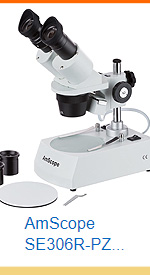WHAT IS A DIAMOND TRIGON?
DIAMOND TRIGONS - NATURALS - TRIANGULAR GROWTH PATTERNS
This post contains affiliate links. If you use these links to buy something I may earn a commission. Thanks! As an Amazon Associate I also earn from qualifying purchases.

The name trigon is such an odd name.
Trigon sounds kind of Star Trek to me:
“Please, Captain, not in front of the Klingons!“
But in reality, a trigon is nothing more than a triangular shape found on a diamond.
The definition:
A three-sided polygon.
I first encountered trigons about 28 years ago. I was analyzing a diamond under a microscope just for the fun of it (a hobby of mine), and there they were…
TRIGONS!
I found them on a rough spot of the girdle (called a natural – Because it’s in the natural state, which is the original diamond untouched, uncut, and unpolished).
This natural had some very interesting shapes and patterns on it. I instantly became more curious.
I zoomed in all the way (30x magnification) and low and behold I had my first experience with a trigon.
Or should I say a lot of them.
WOW!
What a great find.
I had never seen anything like it before – And I study a lot of diamonds.
I’m always checking out facets, angles, how the cuts line up, looking at the culet and the girdle and of course all the imperfections and blemishes…
But nothing as exciting as this. Trigons (I even like saying the name) never cease to amaze me.
“YO BOSS!”
At the time I didn’t know what a trigon was. My boss had to come over and explain them. He was as excited to see them as me. Natural triangular growth patterns is Mother Nature at her finest.
What are trigons?
Trigons, no doubt, are very cool. They really do look like triangles one atop of another (etched pits, indented on octahedral faces – like an upside down step pyramid). See the diagram below to understand more.
You’ll see the natural (black area) on the bottom side of the girdle (red area – The girdle is the line that separates the crown from the pavilion) and all the triangular patterns formed in between.
Look at the diagram and look at the diamond – Very awesome stuff.

My boss looked at me and smiled “That’s how diamonds are formed.”
“Really?” I went back for a second look. Boy was I hooked!
Triangular patterns:
Diamonds grow naturally in triangular patterns from carbon atoms joined together (and all this time I was thinking that diamonds grew like snowflakes). But no, triangle patterns are just how a diamond is born.
Add in the right amount of heat and the right amount of pressure and you’ll see 100% pure carbon cooking. The Earth is, after all, just a big oven for gemstones.
Identification
Do note that trigons are neither good, nor bad. Trigons are just another way to identify the diamond. Plus they also help prove that it’s a real diamond.
Trigons are probably one of the coolest things I’ve ever seen. But I will tell you, trigons are not easy to find. You could probably look at hundreds of diamonds and never find any of these cool little formations (crop circles anyone?) Hunting for trigons is like finding a needle in a haystack. Not easy!
You may even have trigons on your diamond right now and don’t even know it.
Does it make you curious?
Maybe it’s time to check it out? The next time you’re in a jewelry store, ask them to use their microscope or jeweler’s loupe. Look at your diamond. Look all around the girdle and the underside of it (where trigons show up the most). See if you find any cool triangular patterns just waiting to be discovered.
Certification:
Another place that will tell you if you have trigons or not…
Would be your certification papers.
Look at the certificate (like GIA) for either a natural or an indented natural listed right on the actual diamond report (see example Key To Symbols below). Trigons could show up on either natural. If you have naturals listed, you may have a trigon.

You should note that trigons don’t affect the clarity rating of your diamond.
(That is, as long as the trigon is on the girdle and doesn’t distort it.)
So what are you waiting for?
Grab your papers, loupe, and look.
See if you find one… You could even find dozens.
You could be the proud owner of a rare diamond phenomenon (just wait until your friends hear that).
All in all, trigons are just a simple natural growth on a diamond.
It’s a microscopic world rarely seen by man.
But once you see them, you’ll never forget them.
I surely won’t.
Cheers! :)


















I would like to send someone a picture that I think has trigons
Send it on my contact page. :) -Richard